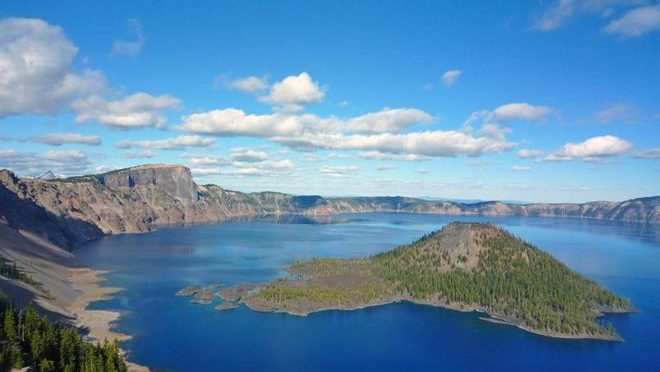The wall of Crater Lake circles it for a distance of twenty-five miles; the lake must be seven by ten miles in width and length. Where we stood, the wall had been measured and counted as 1,500 feet in height, and this was one of the lowest portions of it; it rises in other portions to 3,000 feet. Almost the entire distance the waves wash a nearly vertical wall; a slight slope outward at the top relieves it from direct perpendicularity, and near where we stand it is possible when the snows are gone to descend by a steep ravine, in which there is an occasional hemlock and some undergrowth. There is a narrow rim of boulders at the water’s edge here, but there is no friendly shore. The mountain wall, for nearly the entire circuit, is a sheer cliff, grooved somewhat by the relieving hand of time that is constantly finishing its masterpieces, and sometimes the wall of gray is exchanged for red, ragged edges and pinnacles of lava, and there are, to our right, towers and fretted spires of such, rising from the placid lake. It is a scene that some master hand might be immortalized by transferring to canvas. Its grandeur is almost monotonous, its solitude is supremely desolate, and the mystery of’ authorship is most sublime.
To the right stands Mount Scott, one of the perpetual snow points of the Cascade Range, yet it was but an insignificant butte compared to the mighty mountain of which naught is left but this vast crater. The western base of Mount Scott reaches to the crater rim, and shelves down in 3,000 feet of precipice to meet the water. It is a work of days to study this mystery, to read these lava cliffs, to tread these summit snows, and watch the changing humors of the deep-down, inner surface. The bird that leaves us to cleave the air downward to the water’s edge is lost to sight long before reaching its mark; the stone we dig from under the snow to roll over the bank is heard long after it ceases to be seen; the red crags that rise off to the right, near the wall, look small, but they are hundreds of feet high.


